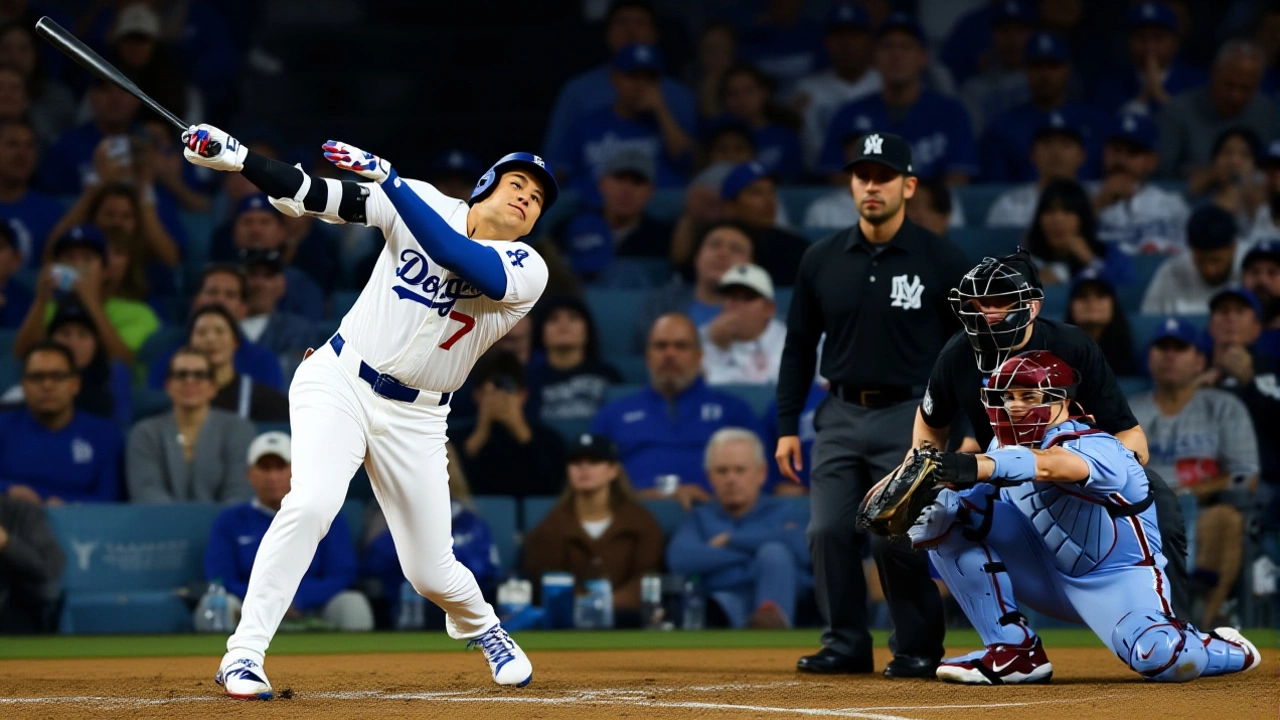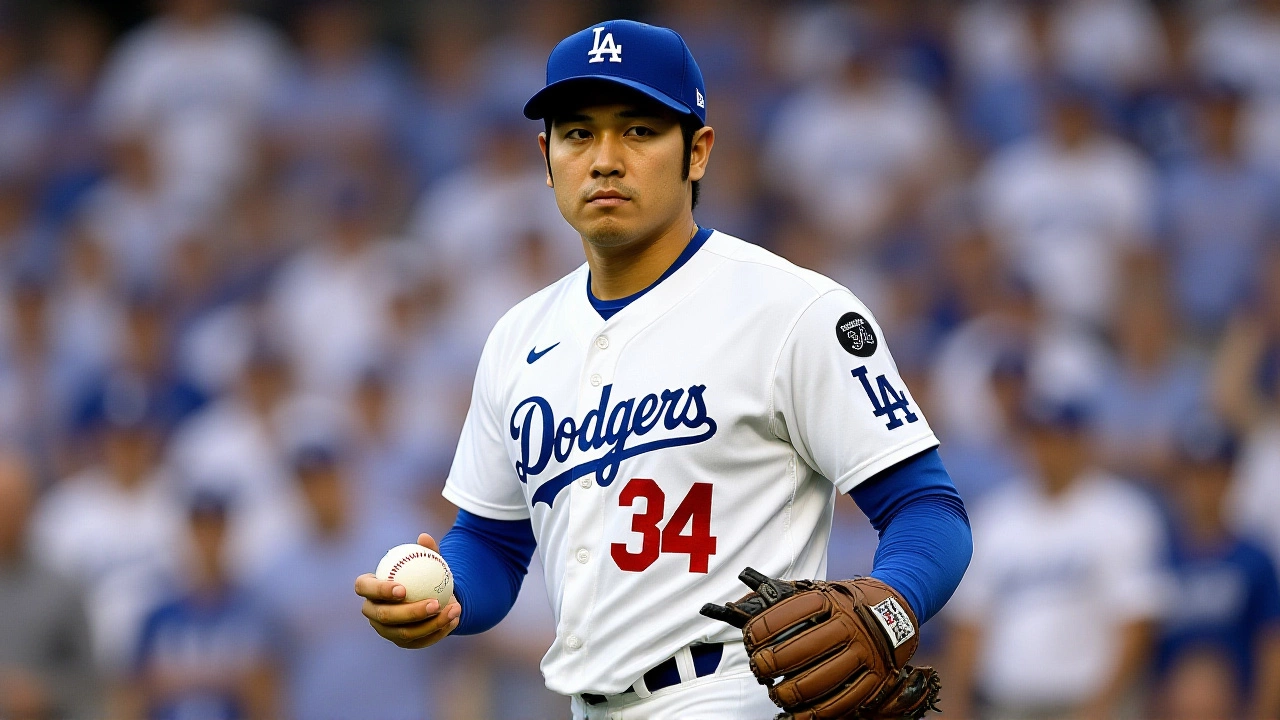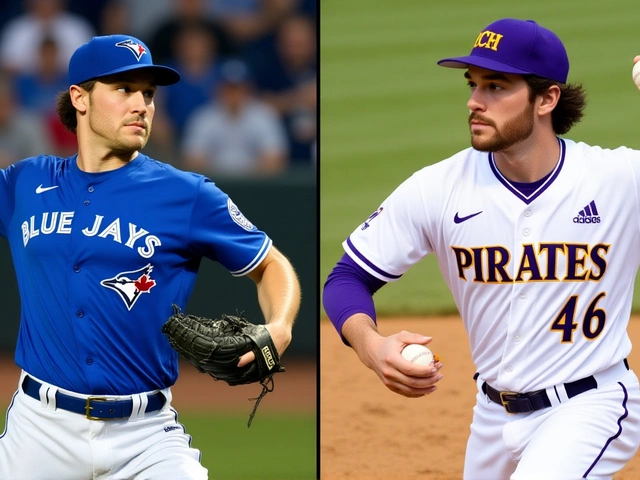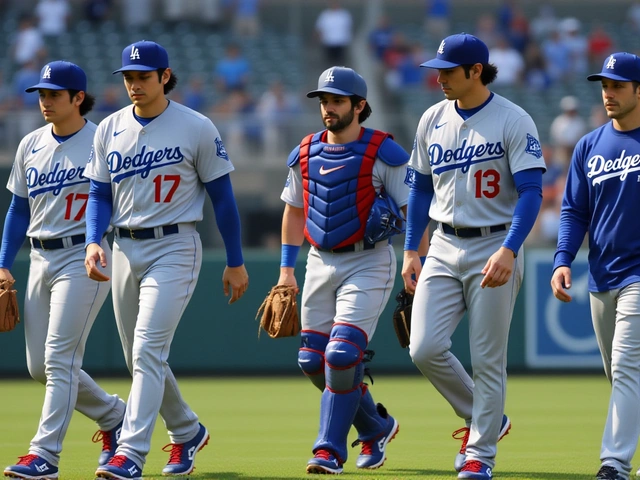When Shohei Ohtani, the dual‑role star for the Los Angeles Dodgers, took the mound on Oct. 17, 2025, the stadium buzzed like a fireworks show on the Fourth of July. Ohtani’s three home runs and ten strikeouts over six scoreless innings not only capped a 4‑0 sweep of the Milwaukee Brewers in Game 4 of the National League Championship Series, but also vaulted the Dodgers straight into the World Series against the New York Yankees. The performance, described by the team’s official blog as “the greatest ever,” cemented a season‑long experiment: a purpose‑built support system for Japanese talent that finally showed its payoff on baseball’s biggest stage.
The Historic NLCS Game
Dodger Stadium’s lights dimmed just before 11 p.m. Pacific as Ohtani stepped up to the plate for the third time that night. In the third inning he launched a 487‑foot solo shot that left the right‑field fence shaking. Five innings later, a 452‑foot two‑run blast followed, and in the seventh he lifted a 431‑foot three‑run homer, all off Brewers starter Freddy Peralta, a 28‑year‑old right‑hander from Santiago de los Caballeros, Dominican Republic. Between those blasts, Ohtani struck out ten batters, keeping the Brewers from scoring a single run.
The Dodgers’ bullpen, featuring two other Japanese right‑handers—Yoshinobu Yamamoto and Roki Sasaki—provided a thin but steady line, allowing the team to rest the burden on Ohtani’s arm. When the final out was recorded at 11:45 p.m., the scoreboard read 7‑0, and the city of Los Angeles erupted. For many fans the night felt like a return to the glory days of 2020, when the Dodgers clinched their last championship.
Dodgers’ Japanese Pitcher Infrastructure
The triumph didn’t happen in a vacuum. Beginning in early 2024, the Dodgers invested $15.7 million into a two‑phase renovation of their spring‑training complex in Glendale, Arizona. Phase 1, completed March 1, 2024, cost $8.3 million and added a Nippon‑League‑style bullpen with custom‑engineered mounds that mimic the lower‑arm angle favoured by Japanese pitchers. Phase 2, wrapped up Jan. 15, 2025, added a Japanese‑language video‑analysis suite and a traditional onsen‑style recovery pool, a $7.4 million outlay that brought the total spend to $15.7 million.
Beyond bricks and mortar, the Dodgers assembled a 12‑person Japanese‑speaking staff across baseball operations, medical, and communications. Translators sit beside coaches on the field, dietitians craft meals that blend Western protein sources with Japanese fermented foods, and biomechanics experts use motion‑capture tech to fine‑tune each pitcher’s release point. The organization’s player‑development hub in Vero Beach, Florida, now houses a “cultural immersion lab” where newcomers practice English while preserving their native rituals.

Key Figures Behind the Initiative
At the helm of the strategy sits Andrew Friedman, the Dodgers’ president of baseball operations, who championed the project after Ohtani’s free‑agent signing on Dec. 9, 2023. “We realized that talent isn’t just about swing speed or fastball velocity—it's also about making a player feel at home,” Friedman said in a press conference on Feb. 20, 2024.
General manager Brandon Gomes oversaw the contracts for Yamamoto and Sasaki, ensuring that their posting fees were matched by a commitment to cultural integration. Manager Dave Roberts, himself born in Naha, Okinawa, acts as the on‑field liaison, often translating scouting reports for the Japanese staff and reminding the clubhouse of the importance of “wa,” the Japanese concept of harmony.
The ownership group, led by Mark Walter of Guggenheim Baseball Management, allocated the renovation budget from the 2024 operational surplus. Their willingness to fund such a niche program signals a shift in how MLB franchises view international talent pipelines.
Impact on MLB and Future Outlook
Experts say the Dodgers’ model could become a template for other clubs. “If you can replicate this success, you’ll see more teams building dedicated facilities for Korean, Cuban, or Dominican players,” noted Dr. Emily Carter, a sports‑economics professor at UCLA. The immediate payoff is clear: the Dodgers are now set to face the Yankees in the 2025 World Series, which kicks off Oct. 25 at Yankee Stadium.
Looking ahead, the Dodgers plan to expand the program to include a scouting academy in Tokyo, slated to open in 2027. They also intend to launch a mentorship exchange, pairing rookie Japanese pitchers with veteran American arms for a six‑month cross‑training stint. If the current roster’s chemistry holds, Los Angeles could be the first team in the modern era to field three Japanese starters in a World Series.

Key Facts
- Ohtani’s three home runs traveled 487 ft, 452 ft and 431 ft.
- Dodgers spent $15.7 million on facility upgrades for Japanese players.
- 12 full‑time Japanese‑speaking staff support the program.
- Yamamoto and Sasaki signed through the posting system; Sasaki’s deal was finalized Jan. 15, 2025.
- The Dodgers’ NLCS sweep marks their first World Series berth since 2020.
Frequently Asked Questions
How does the Dodgers’ Japanese pitcher program affect the team’s payroll?
The investment of $15.7 million is counted as a capital expense, not a salary cost. However, by providing tailored support, the Dodgers have maximized the on‑field value of players like Ohtani, Yamamoto and Sasaki, delivering returns that outweigh the initial outlay.
What specific facilities were added for the Japanese pitchers?
The Glendale complex now boasts a Nippon‑League‑style bullpen with adjustable mound angles, a video‑analysis suite offering commentary in Japanese, and a therapeutic onsen‑style pool that incorporates traditional Japanese recovery methods.
Who are the key decision‑makers behind the program?
President of baseball operations Andrew Friedman, GM Brandon Gomes, manager Dave Roberts, and owner Mark Walter spearheaded the initiative, each contributing to budgeting, staffing and cultural integration.
Will other MLB clubs adopt a similar model?
Analysts predict a ripple effect; teams with strong international scouting budgets are already exploring dedicated facilities for players from Korea and the Dominican Republic, inspired by the Dodgers’ measurable success.
What are the Dodgers’ next steps after the World Series?
Beyond the 2025 World Series, the franchise plans to open a scouting academy in Tokyo by 2027, deepen the mentorship exchange program, and continue refining its bilingual support staff to keep the pipeline flowing.

